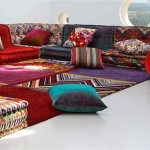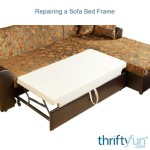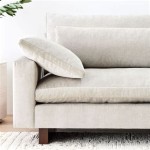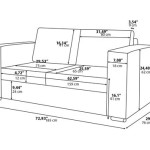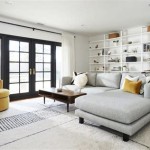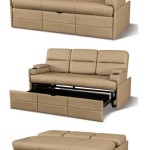The Enduring Elegance of Camel Back Sofas
The camel back sofa, a furniture style characterized by its distinctive arched back, has maintained enduring popularity across centuries of interior design trends. Its graceful silhouette and versatility have allowed it to seamlessly integrate into both traditional and contemporary settings. Understanding the specific characteristics, historical context, and design considerations when choosing a camel back sofa provides valuable insight for discerning homeowners and interior designers.
The defining feature of the camel back sofa is, unequivocally, its back. This hallmark showcases a curved top rail, typically with a raised central point resembling a camel's hump, hence the name. Variations exist, ranging from a single, prominent hump to a gentler, undulating curve with multiple smaller rises. These subtle differences significantly influence the overall aesthetic, allowing for diverse stylistic expressions.
Beyond the arched back, other design elements contribute to the camel back sofa's distinct appearance. Typically, the arms are rolled outward, creating a visual flow that complements the curvature of the back. The legs, often exposed, can range from intricately carved cabriole legs reminiscent of the Queen Anne style to simpler, tapered legs that lend a more modern sensibility. Upholstery choices, too, play a critical role in defining the sofa's character, with fabrics ranging from luxurious velvets and damasks to more casual linens and cottons.
Historical Origins and Evolution
The camel back sofa traces its origins back to 18th-century England, emerging as a prominent feature in the homes of the aristocracy and gentry. This period, characterized by a focus on elegance and refinement, saw furniture designs that emphasized graceful lines and meticulous craftsmanship. The camel back sofa perfectly embodied these ideals, offering a seating option that was both comfortable and visually appealing.
Initially associated with renowned furniture makers like Thomas Chippendale, the camel back sofa quickly became a symbol of status and taste. Its design borrowed heavily from earlier styles, incorporating elements of Queen Anne and Georgian furniture. The use of fine hardwoods, such as mahogany and walnut, further enhanced its perceived value and contributed to its longevity.
Over time, the design of the camel back sofa has evolved to reflect changing aesthetic preferences. In the 19th century, Victorian interpretations incorporated more elaborate ornamentation, including tufting, fringe, and intricate carvings. The 20th century witnessed a simplification of the design, with cleaner lines and a greater emphasis on comfort. Today, the camel back sofa continues to be adapted and reinterpreted by contemporary designers, ensuring its relevance in modern interiors.
Key Design Considerations
Selecting the right camel back sofa requires careful consideration of several factors, including the size and scale of the room, the existing decor, and the desired aesthetic. A sofa that is too large or too small can disrupt the balance of a space, while a mismatched style can create a sense of disharmony.
Size is paramount. Before making a purchase, accurately measure the available space and consider the flow of traffic. A large living room can comfortably accommodate a generously sized camel back sofa, while a smaller space might require a more compact design. Factors such as door widths and stairwells should also be considered to ensure the sofa can be easily delivered and installed.
The existing decor plays a crucial role in determining the appropriate style and upholstery. In a traditional setting, a camel back sofa upholstered in a rich fabric and featuring ornate detailing would be a natural fit. Conversely, in a contemporary space, a streamlined silhouette with clean lines and a neutral fabric would be more appropriate. The sofa should complement, not compete with, the other elements in the room.
Upholstery choice is a critical factor. Fabric selection should align with both the aesthetic and functional requirements of the space. Durable, stain-resistant fabrics are ideal for high-traffic areas or homes with children and pets. Luxurious fabrics, such as velvet or silk, can add a touch of elegance and sophistication, but may require more delicate care.
Integrating a Camel Back Sofa into Various Interior Styles
The versatility of the camel back sofa allows it to be seamlessly integrated into a variety of interior design styles. Its adaptability stems from the numerous variations in its design, ranging from traditional interpretations to more contemporary adaptations. Understanding how to style a camel back sofa within different contexts is essential for achieving a cohesive and aesthetically pleasing result.
In a traditional setting, the camel back sofa can be paired with other classic pieces, such as antique side tables, ornate mirrors, and patterned rugs. Rich, warm colors and luxurious fabrics, such as velvet or damask, can further enhance the traditional aesthetic. Accessories like tasseled cushions and framed artwork can add a touch of elegance and sophistication.
For a more contemporary look, a camel back sofa with clean lines and a minimalist design can be combined with modern furniture and accessories. Neutral colors, such as gray, beige, or white, can create a sense of calm and sophistication. Accents of color can be introduced through cushions, throws, or artwork. Utilizing materials like metal and glass can also contribute to a modern aesthetic.
The camel back sofa can also be successfully incorporated into eclectic interiors. This involves mixing and matching different styles and periods to create a unique and personalized space. In an eclectic setting, the camel back sofa can serve as a focal point, around which other diverse pieces are arranged. The key is to create a sense of balance and harmony, ensuring that the different elements complement each other.
In a transitional style, which blends traditional and modern elements, a camel back sofa can be a perfect choice. Opting for a sofa with a classic shape but upholstered in a modern fabric can bridge the gap between the two styles. Combining traditional furniture with contemporary artwork or accessories can create a balanced and harmonious space.
The camel back sofa's adaptability extends beyond formal living rooms. It can also be utilized in more casual settings, such as dens or sunrooms. In these spaces, a camel back sofa upholstered in a durable, comfortable fabric can provide a relaxed and inviting seating option. Pairing it with comfortable armchairs, coffee tables, and soft rugs can create a cozy and welcoming atmosphere.
Regardless of the specific style, careful attention to detail is crucial when incorporating a camel back sofa into an interior. The choice of fabric, the placement of accessories, and the overall color palette can all significantly impact the final result. By carefully considering these factors, it is possible to create a space that is both stylish and functional.
Ultimately, the enduring appeal of the camel back sofa lies in its timeless elegance and versatility. Its ability to seamlessly integrate into a variety of interior styles makes it a valuable addition to any home. By understanding its history, design features, and styling options, homeowners and designers can fully appreciate the beauty and enduring value of this iconic piece of furniture.

The Best Modern Camelback Sofas You Can Buy Right Now Sofa Makeover Apartment Size Timeless

Jennifer Taylor Elaine 77 In W Rolled Arms Velvet Camel Back Rectangle Sofa Olive Green 63470 3 V036 The Home Depot

Centaur Camelback Sofa

Camelback Sofa Baker Furniture Chanintr

Morden Fort 82 In W Grey Classic America Chesterfield Tufted Camel Back Sofa 5905 3 The Home Depot

Decorating With Camelback Sofas Living Room Decor Home Sofa

Wooden Camelback Sofa

1880 S Camel Back Sofa 186465

Classic Wooden Carved Camelback Sofa Set At The Best

Eye For Design Decorating With Camelback Sofas


